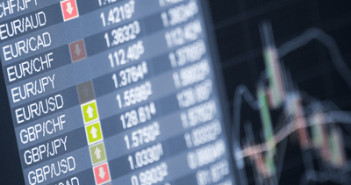The fluidity of the geopolitical landscape refuses to quietly defuse, though global equity markets are taking the overnight developments in stride with a cautiously optimistic tone as we get set for the beginning of the trading day in North America.  Another Egyptian-brokered ceasefire on the Gaza strip has put the Israeli-Hamas conflict on the back burner for the time being, though the potential for acceleration of the situations in both Ukraine and Iraq intensifies this morning, pushing the pendulum for geopolitical developments further to the “anxiety†side of the spectrum.  At the moment, a Russian convey of humanitarian aid destined for east Ukraine is on route, but reports are suggesting the convey may have issues getting through the border as the Ukrainian government is skeptical to take the Russians at their word, worried the humanitarian mission could be a guise under which Russian military are snuck across the border.  While the Russians and West engage in what surely amounts to political game theory, the political situation in Iraq is beginning to spiral out of control, with Prime Minister al-Maliki continuing his refusal to step-down, increasing the military presence in the capital of Baghdad.  To make matters worse, the US and President Obama have put their support behind President Masoum and the formation of a new government, promising more aid if the ousting of al-Maliki can be achieved.  Risk appetite for investors has not yet reflected the potential issues waiting in the wings, with S&P futures marginally higher ahead of the opening bell, the yield on the 10-year US treasury climbing to 2.43%, and front-month WTI sliding to the low $97s/barrel.
A round-up of the European session midway through the day is not as optimistic as equity futures in the US would have you believe, with Germany’s Dax leading the major bourses lower after economic sentiment in the region (as measured by the ZEW institute) crashed from last month’s 27.1 to 8.6, the lowest level since December 2012 and far below expectations of 8.6.  The recent string of disappointing economic indicators from the world’s fourth largest economy, along with an escalation of sanctions towards Russia, has institutional investors and analysts nervous about future economic conditions, which could dramatically increase should Thursday’s quarterly GDP reading illustrate contraction in Q2.  EURUSD has fallen back into the mid-1.33s this morning, with the probability of more downside likely given the technical positioning after last week’s failed attempt to hold in the 1.34s, especially if price action is able to chew through some of the weaker longs that are trying to catch the falling knife.
As we head into the North American open there is little in the way of tier-one economic data, though JOLTS data is set to drop at 10:00EST, a US labour market indicator that is gaining more prominence at Janet Yellen and the Fed look towards ancillary releases that more accurately reflect the slack in the labour market.  As companies in the US prepare to meet increased demand by adding to their workforces’ the recent trend of expanding job openings is expected to continue, with the forecast for June’s job openings coming in at 4.7M, which would be a new all-time high since the survey began in 2007. Increased demand for labour in the US should start to filter through to average workweek hours and earnings, which would likely start putting pressure on the Fed to update their projections on when they think the first rate hike will occur.  The recent string of economic indicators has been quite complimentary to the landscape south of the 49th parallel, so if the slack in the labour market begins to be absorbed at a faster pace than expected, the Fed may be forced to start their rate hike cycle sooner than they anticipated.  USDCAD has managed to claw back some of its losses from yesterday, with the pair finding support in the low-1.09s, comfortable within its recent range pivoting around the mid-1.09s level.
Further reading:
GBPUSD: Looks For A Bottom
EURUSD



